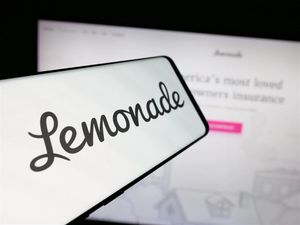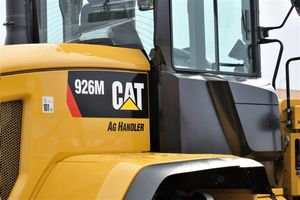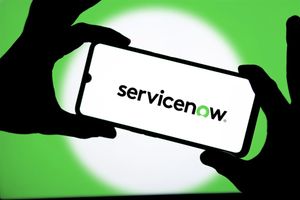That was the central takeaway from an executive vidcast featuring Mark Jensen, chief executive officer and co-founder of MyVelo TV, Alex Day, vice president at middleware provider Tolka, and Rick Dumont, business development lead for Advanced HDR by Technicolor.
The discussion highlighted a pivotal transition. ATSC 3.0 is less a broadcast upgrade than an IP transformation. That shift forces every layer of the video delivery stack — capture, processing, transport and display — to evolve together. Conversion boxes, equipped with modern chipsets, browsers and decoding technology, are becoming the most practical way for consumers and broadcasters to make the transition without a complete replacement of installed televisions.
Why Conversion Boxes and Why Now
Consumers want picture quality, immersive audio and simple access to free content, Jensen said. "ATSC 3.0 enables many of the features that viewers are asking for, such as enhanced picture quality and cinematic sound," he explained. "It is becoming very important in bringing the type of video experience that people expect."
ATSC 3.0 enables all three by offering a range of new capabilities, including full HDR in HD and 4K workflows, enhanced audio and interactive services. Those benefits only reach households that can receive and render the new signals. Although new televisions are beginning to ship with NextGen tuners, the long replacement cycle of five to seven years means widespread adoption is moving slowly," Jensen said. HDMI-connected conversion boxes, by contrast, can be added quickly and at relatively low cost. These devices are becoming the critical link that allows consumers to access NextGen features immediately, without waiting for the slower turnover of television sets.
Day said the demands on middleware providers are significant, as efforts accelerate to make new capabilities available to conversion box providers. "ATSC 3.0 is an entirely new data delivery protocol," he noted. "It brings in requirements for 4K, interactivity, advanced emergency alerting and HDR. That means using more powerful chipsets and integrating browsers that can run interactive features for consumers. It's quite a lot to put together," Day said. Those layers of complexity underscore why conversion boxes must be designed not only to handle new features, but also to support legacy systems. That balance — bridging the old and the new — is central to the NextGen rollout.
Backward Compatibility Without Backsliding
To that end, the panelists addressed another key industry challenge. The shift from standard dynamic range to high dynamic range cannot happen right away. Production trucks, distribution networks and home displays vary in capability. Dumont explained that Advanced HDR by Technicolor, referred to in the standards community as SL-HDR, was designed to meet this challenge. "You cannot just switch from SDR to HDR overnight," he said. "At every step — from capture to distribution to the home — you need solutions that allow broadcasters to deliver HDR content without leaving legacy viewers behind."
By transmitting SDR with dynamic HDR metadata, SL-HDR enables broadcasters to send one signal that can serve both SDR and HDR displays. "That means you don't need separate channels, which would be costly," Dumont said. "And the overhead is very small, maybe one percent, which makes it efficient for both streaming and broadcast."
Jensen added that the goal for device makers is to keep the complexity invisible to consumers. "We support all of the HDR standards that are in use today," he said. "The consumer shouldn't have to worry about HDR formats — they simply expect the best possible picture quality on their screen every time."
Live Sports as the Proving Ground
Live sports are the ultimate test for HDR, the experts agreed. Dumont emphasized that Advanced HDR by Technicolor's dynamic processing is essential. "If you are watching outdoor sports like soccer, where a player can run from shadow into bright light, static conversion simply cannot keep up," he explained. "You need to automate the adjustment frame by frame so the viewer always sees the true image. Otherwise, the quality will collapse in real time."
Jensen said that this is particularly important for MyVelo TV's customers. "Resolution is one thing, but HDR delivers the contrast and color accuracy that people actually notice," he said. "Sports look extremely good with HDR because you feel like you are right there at the event."
Economics of Choice and Discovery
The panel also pointed to economic factors driving interest in conversion boxes. Jensen said viewers want a simpler way to find programs without managing multiple subscriptions. "If you want your local game or the latest news, it's become very hard to figure out which service you need," he said. "By combining broadcast TV with free streaming services, our platform can show consumers where they can watch for free or through subscriptions they already have."
Day noted that flexibility across device tiers is also crucial. "You need both high-end devices with every feature and very low-cost devices for people who just want a basic signal," he said. "Backward compatibility and simplicity are what make the standard usable for everyone."
From U.S. Pilot to Global Template
The lessons from the U.S. transition to ATSC 3.0 are being closely watched in global markets, where broadcasters and policymakers see an opportunity to skip legacy infrastructure and move directly to next-generation digital capabilities.
Day highlighted developments in India, where ATSC 3.0 is being considered for "direct-to-everything" applications beyond television. "They are looking at delivering data to cars, phones, tablets and even digital signage," he said. "That's a very exciting expansion of what the standard can do."
Brazil recently adopted its own variant of ATSC 3.0. "The president of Brazil signed it into law, and although it includes features that no current chipset supports, manufacturers are already working to deliver hardware by next year," Day said.
Dumont stressed that the international market is especially promising for Advanced HDR by Technicolor. "In Brazil, over-the-air viewing is even more widespread than in the United States," he said. "That makes spectrum-efficient HDR a powerful way to deliver better quality without adding cost. It is a great opportunity ahead of events like the 2026 World Cup."
What to Watch Next
The executives pointed to three developments that will determine the pace of adoption.
- Broadcasters in the United States are waiting for approval to turn off ATSC 1.0, Day said. "Once that happens, we'll see faster rollout of ATSC 3.0 services."
- Another factor is the availability of reference platforms. "It's about making it easier for manufacturers to get into the market," Day added. "Turnkey middleware and certified platforms will accelerate adoption."
- Finally, consumer demand may be the deciding force. Dumont noted that major sports events could be pivotal. "Nothing convinces viewers faster than seeing HDR live and in action," he said.
In the final analysis, the panelists concluded, a hybrid model — with IP delivered from both broadcast towers and the cloud, and decoded by affordable, upgradable conversion boxes — will extend the life of existing screens and investments in media while also delivering the richer color, contrast, and audio that consumers already expect from mobile devices and theaters.
View the Full Vidcast Interview Here.
Photos: (Click photo to enlarge)



Source: Advanced HDR by Technicolor
Read Full Story - Conversion Boxes Step into the Spotlight as ATSC 3.0 Marches Mainstream | More news from this source
Press release distribution by PRLog






